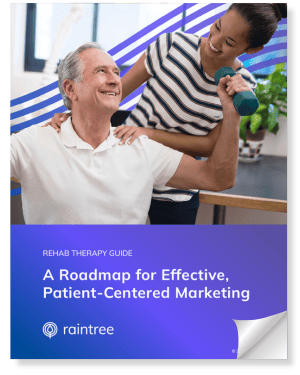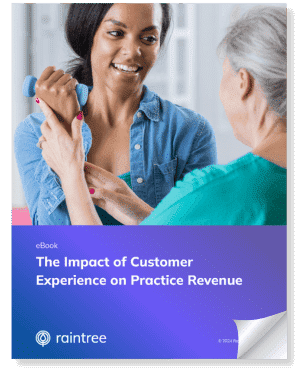
Many healthcare practices recognize the value of delivering quality experiences that make individuals feel appreciated, valued and empowered as partners in clinical decision-making. Gathering measurable insight on the patient experience is critical to meet these goals.
Here’s your introduction to conducting valuable net promoter score (NPS) surveys. Plus, we’ll explore how you can put your patient survey feedback results into action.
What Is a Net Promoter Score (NPS)?
The Net Promoter Score (NPS) turns patient feedback into a useful metric by quantifying the patient experience with a rating system that enables healthcare providers to analyze their healthcare practice. Respondents provide feedback through a rating scale of 1-10, with responses categorized into promoter, passive and detractor. While those scoring a 9 or 10 are promoters, scores below a 6 are detractors and scores of 7 or 8 are classified as passive.
You can measure your NPS by calculating the difference in the percentage of promoters versus detractors. For example, if 60% of respondents are promoters and 20% are detractors, you have a Net Promoter Score of 40. Higher scores indicate better quality patient experiences while lower scores signify less satisfied patients. Healthcare organizations can then use NPS to predict business growth, identify areas of weakness and improve clinical retention.
How To Leverage NPS Data
To make the most of your NPS data collection and to actually transform your practice, you need to put your insights into action. You can achieve this by asking the right open-ended questions, strategically analyzing feedback trends, making real changes for the better and actively keeping in touch with patients throughout their entire healthcare journey – even post discharge!
Ask Clear and Direct Questions
When designing an effective healthcare survey, your questionnaire must be brief and focused to ensure a high response rate.
If a survey is too long or confusing, patients may not answer all the questions. Or worse—they could ignore the survey entirely. Keep in mind that the classic way to conduct an NPS survey is to present the opportunity for the respondent to offer a one to ten scale rating. You should also include an open-ended question asking for the explanation behind their response. In constructing your survey, you should present the standard NPS question:
“How likely are you to recommend us to a friend or colleague? Choose a number between 1 (not likely) through 10 (highly likely).”
In addition, you can include questions that solicit clarification or provide advice on what could be better, in the case of a “detractor” response.
Measure What Works
Over time, fluctuations in your NPS score can help you discern when you are achieving your goals… and when you need to make adjustments. Reviewing patient survey feedback will help you determine which aspects of your practice that patients enjoy and which ones may frustrate them.
While you may make occasional quick fixes to address common concerns, you can’t make sweeping changes to your practice overnight. Instead, use patient satisfaction rates to identify themes, analyze trends and prioritize actions to take.
Remember that multiple variables in your practice play a role in a patient’s experience. By analyzing your NPS over time, you can assess whether procedures, technology or staff assignments may be hindering your practice’s ability to deliver positive patient experiences. Ensure that you gather enough data over a few months to identify the problem before making changes.
Implement Changes at Your Practice
Once you have analyzed the data to discover what isn’t working, you should take corrective action that aligns with the patient feedback.
When making operational changes, you need to make sure that your staff is on board to ensure success. This is true whether you are onboarding new technology, updating your clinical workflows or adjusting task productivity.
Instead of implementing something new and hoping everyone will comply, make a plan in advance that communicates the rationale for your decision to all of your team members. Keep reaching out to reinforce the need for the transition and acknowledge the importance of celebrating success, no matter how small the victory.
After you have instituted a change, you should steadily stay consistent unless new patient data leads you in another direction. Ideally, you should gather three to six months’ worth of patient insight to see if your actions have made a difference before pursuing other shifts.
Don't Stop at the Survey: Create a Patient Engagement Strategy
While NPS is a valuable tool, capturing and analyzing this metric is only one element of encompassing every interaction each individual has with your practice. Today, patient engagement tools make it easier to create a great, end-to-end experience throughout the entirety of the patient journey.
Through automated communications—including email and two-way SMS—you can educate patients on health initiatives, remind them of upcoming appointments, support convenient patient-provider contact, and help patients foster a strong relationship with your practice.
Automated outreach can also help patients stay adherent to their plans of care, by reinforcing treatment guidance and empowering them to stick to their new routines.

Putting Patient Survey Feedback to Work
At the start, gathering NPS feedback can seem like a cumbersome task, but the right technology can streamline data collection and fine-tune your operations so that you can achieve high levels of service that empower you to meet— or exceed—patient expectations.
By regularly reviewing your NPS score, you can determine whether you are successful at meeting patient needs or if you need to make adjustments.
Patient engagement software can make the process easier, with automated survey distribution and detailed reporting. In this way, your patient survey feedback can translate into actionable insights that you should employ to create better outcomes and even greater patient experiences.

